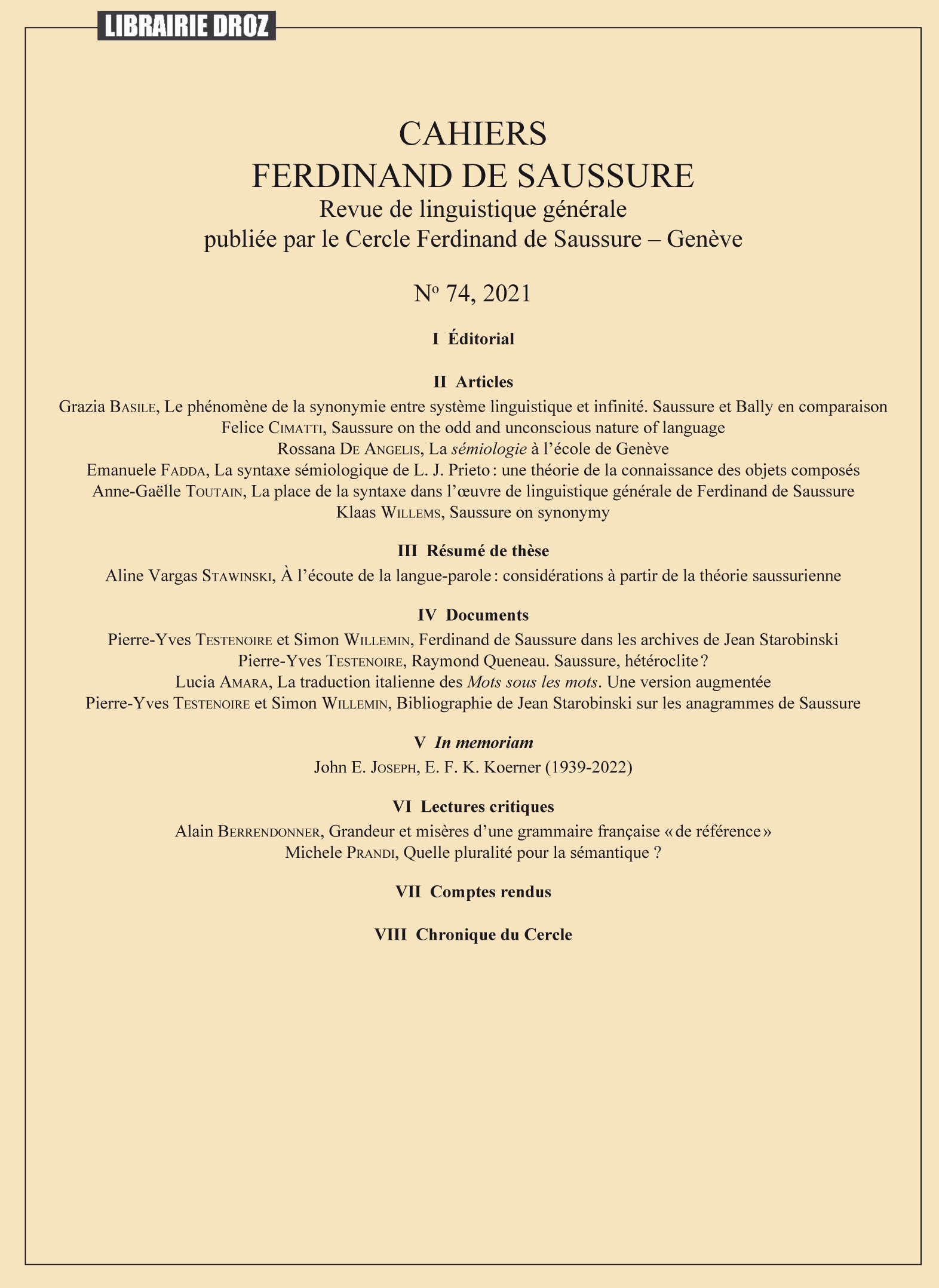La sémiologie à l’école de Genève
Abstract
The term semiology is unanimously attributed to Ferdinand de Saussure. Conceived as an autonomous field of research, semiology is presented as deriving directly from his lectures. Nevertheless, it is not seen as a field of research which has led to the creation of a real school (such as the School of Paris), nor to the instituting of a specific object of analysis. However, a semiological “legacy” stemming from Saussure’s proposals has consolidated. Protagonists of this legacy are Éric Buyssens, Luís J. Prieto, Georges Mounin, and Jeanne Martinet. To understand how their different semiological projects relate to one another, we must go back to the sources. That the definition of “semiology” presented in the Cours de linguistique générale developed across different phases of Saussure’s thought can be seen in the various senses in which it is used. This article examines the meanings which “semiology” has for Saussure and for those scholars who subsequently took it up.
Keywords
Semiology, Geneva School, Buyssens, Prieto, Mounin, Martinet
How to Cite
More Citation Formats
Issue
Most read articles by the same author(s)

